Being as environmentally-friendly as possible is one of my main goals in life and I'm always on the look out for new ideas to make life a bit greener. A few years back, Sam and I were travelling in New Zealand and I saw this amazing stick tree in the window of a shop:
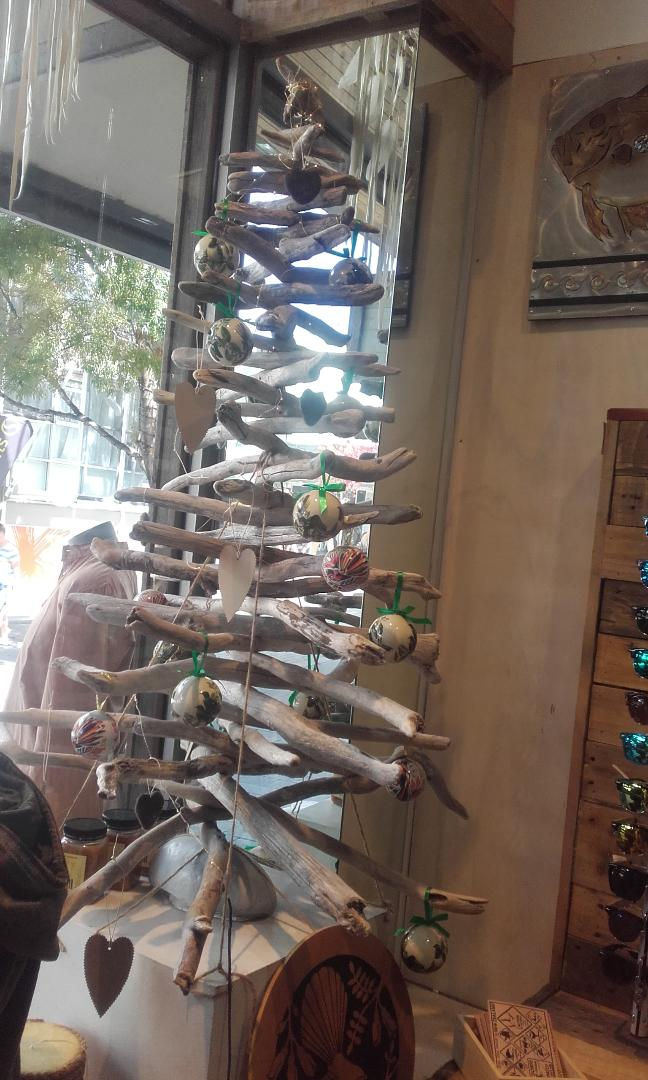
I loved the style of it, and thought it would look fantastic decorated with Christmas decorations. There was plenty of woodland near where we lived at the time, so when we got back to the UK, we decided to have a go at making our own stick tree as an alternative to a pine Christmas tree.
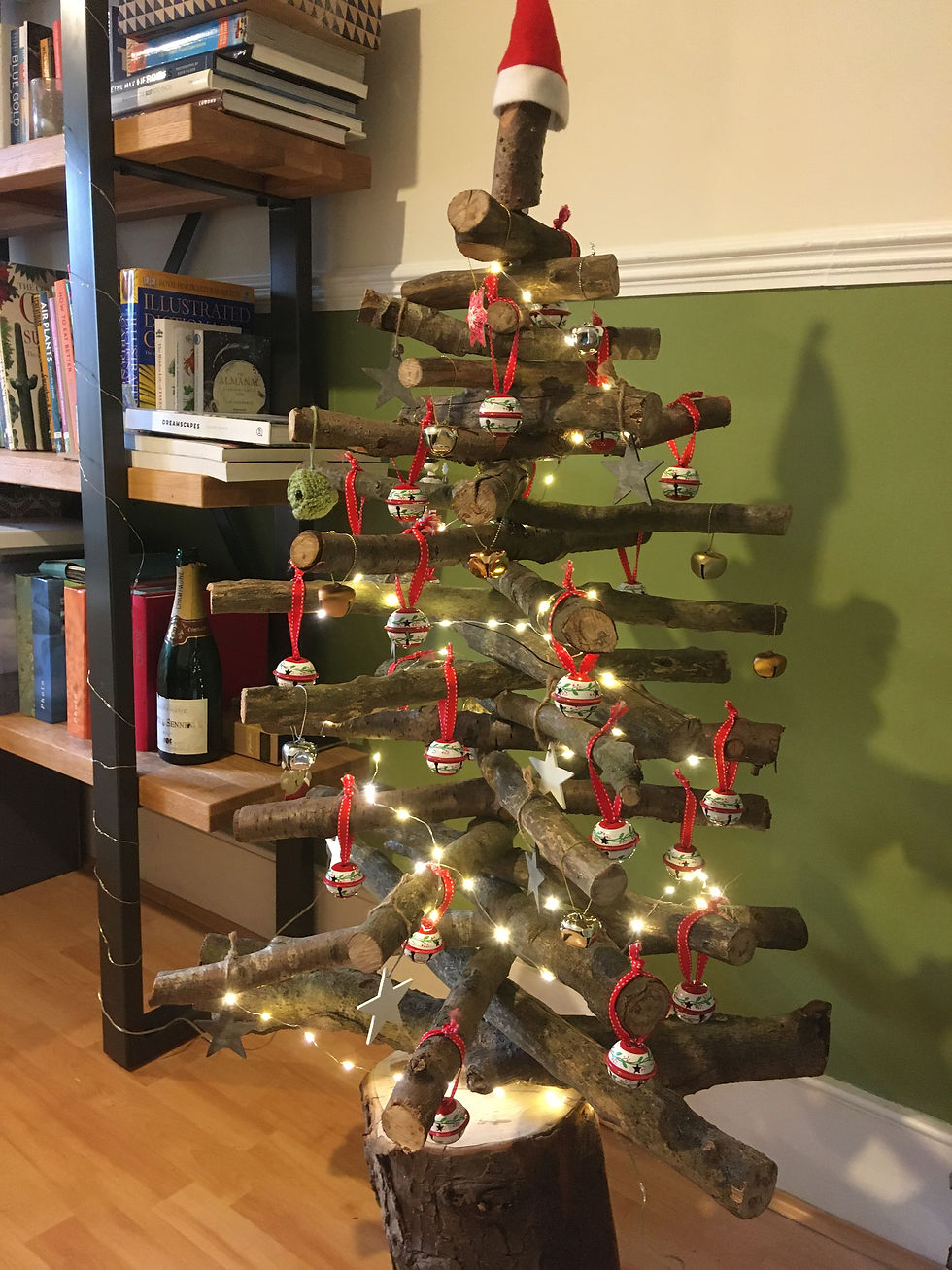
Our tree is now celebrating it's third Christmas, and I have to say, it you want a truly environmentally friendly tree for the holidays, a stick tree might be the way to go! You can reuse it every year and it is also a lot less hassle than dragging a potted tree in from the garden too. If the day comes that we decide to get a new tree, we can very easily dispose of it in a responsible way.
To make the tree, Sam drilled holes through the centres of loose dry sticks. He then threaded them from longest to shortest onto a steel rod, which screws into the wooden base.
I realise this style may not be for everyone, but if you're intrigued by the idea of a truly eco-friendly Christmas tree and you would like some more information, I thought I would compile a list of the pros and cons of our stick tree to give you a better idea and hopefully some encouragement to make one yourself.
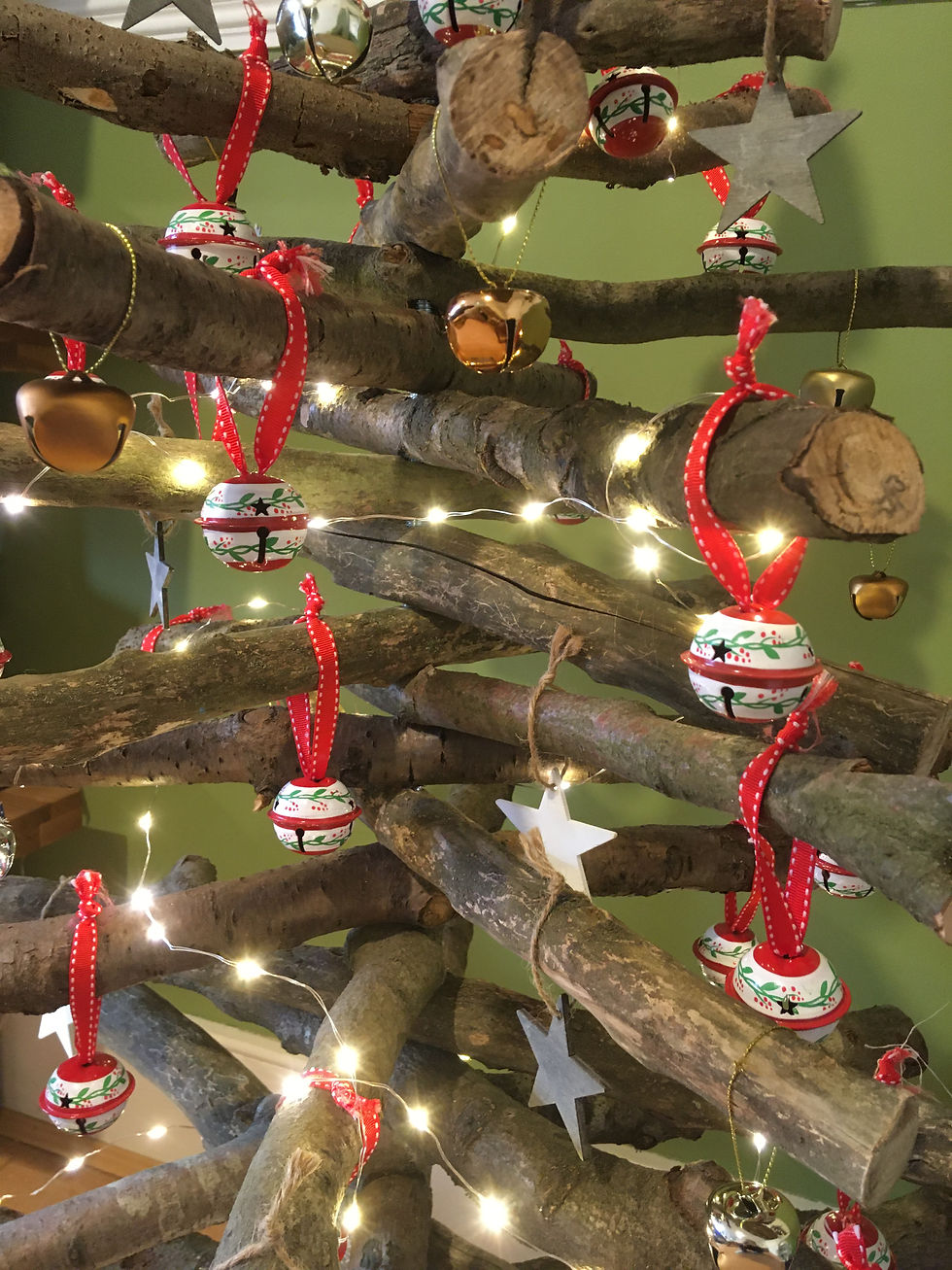
Pros:
1. Nothing get's thrown away.
Our stick tree is waste-free, and after Christmas we just pack up all the parts for the following year. If we did decide to get rid of it, it wouldn't leave much of a trace - the wood naturally rots down if left exposed to the elements. The metal rod in the centre would be easy to reuse or recycle.
2. It's economical
Obviously there is an annual saving, in that we don't have to buy a new tree each year. But actually, this stick tree was cheap to make too. We collected the sticks for free from the local woods. The base is a sanded down pine stump removed from my mum's garden. The metal rod holding it all together was a couple of quid from a hardware shop. The only thing you have to invest in (apart from decorations and lights) is time. You may have to go on a few long walks to collect all the sticks you need to get a good sized tree, and then you'll need to dry them out. We dried our sticks for about a month before drilling holes into them.
3. It's storable and straightforward to put together
This tree is put together easily. It is just a case of inserting the metal rod into the base and then threading the branches onto it. It is also simple to take apart, and for the rest of the year it is stored safe and dry in a box in the attic. Easy!
4. It's mess-free
I don't have to sweep up dropped pine needles, and there is no need to water it, as you would with a real tree.
5. It looks cool
This point is obviously subjective, but both Sam and I happen to like the slightly Scandinavian and minimalist look of this tree. It's both modern and rustic at the same time.
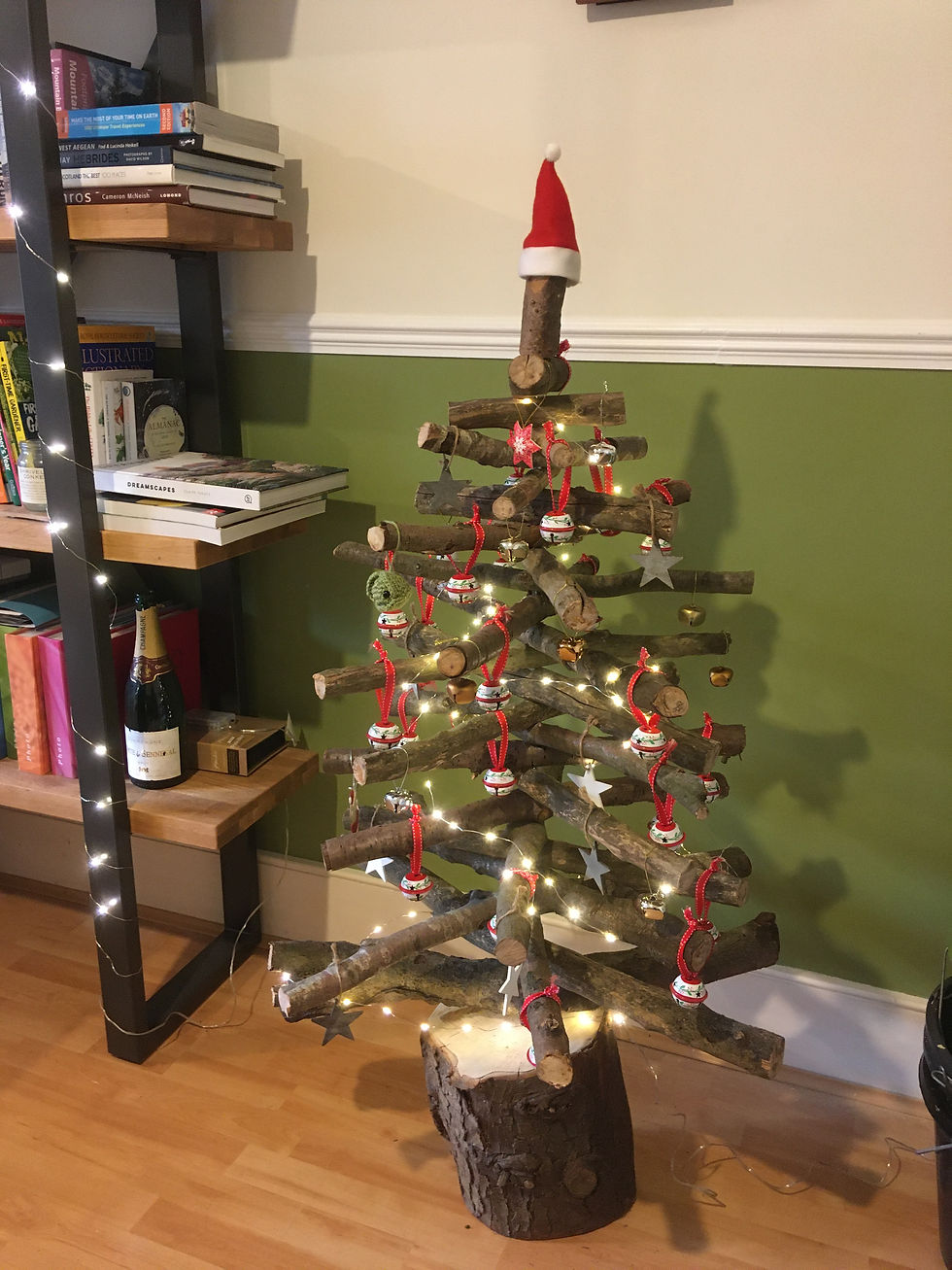
Cons:
1. It doesn't look like a traditional Christmas tree
To add to my last point, while it may look edgy to some, to others it just doesn't compare to the charm of a traditional Christmas tree. I must admit that I do miss having a real tree. I love the tradition of going to pick one out, and the smell of the pine. I also love the look of dark green foliage. However, in the interest of doing my bit to save the planet, I am happy to stick with my stick tree. Plus, I can burn a pine-scented candle during the holidays and invest in some deep green decorations instead.
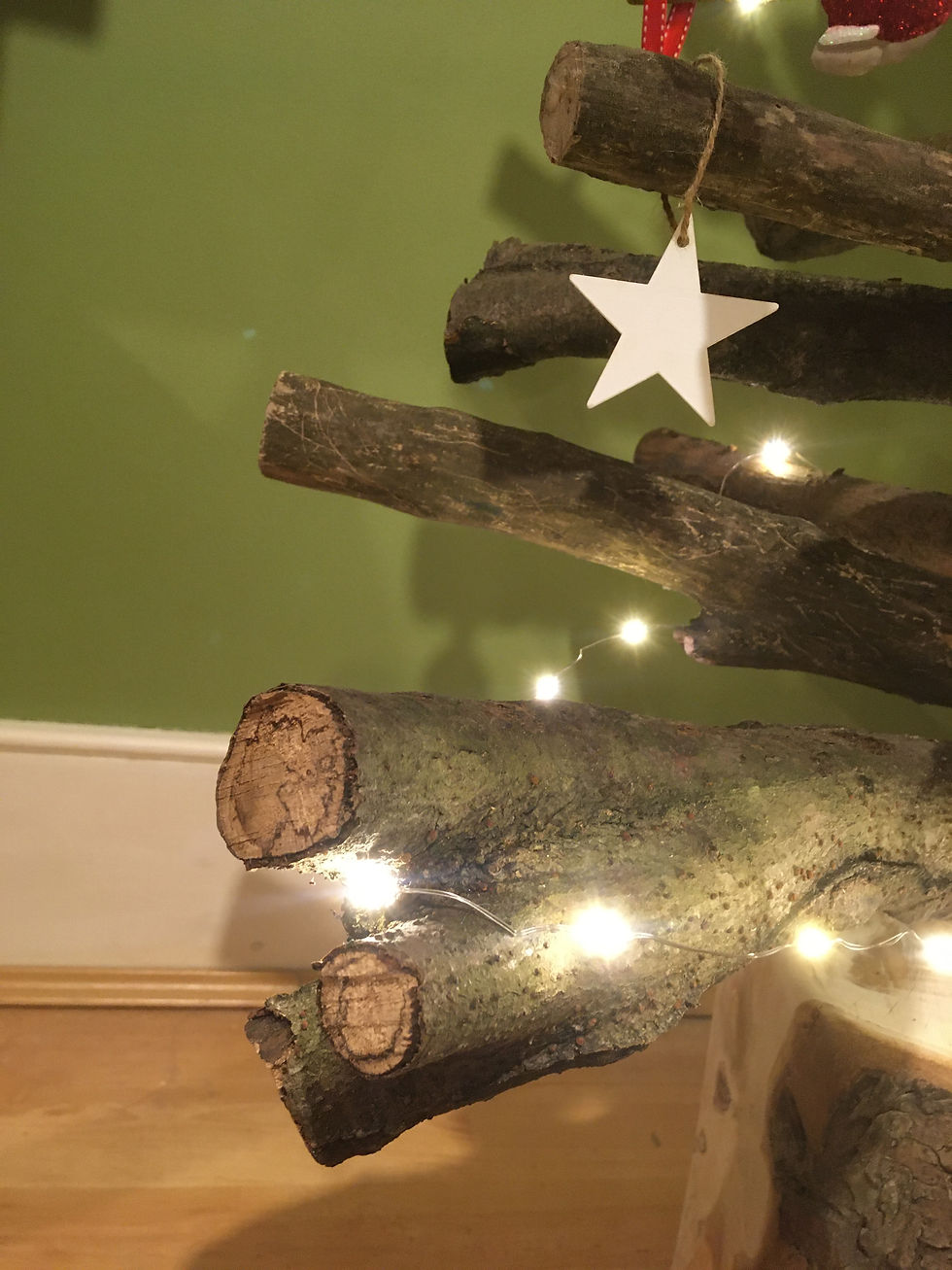
2. Not all the branches can be decorated
Decorating this tree can be tricky because not all the branches are the same size. Some of the lower branches are a bit big for my decorations to hang from (see picture above). Obviously, you can keep this in mind when you collect sticks, and go for thinner ones if you want to. Sam has also suggested attaching little hooks to the undersides of the branches to hang decorations from, which I think sounds like a neat solution.
3. It is not entirely maintenance-free
The wood continues to dry each year, and as it dries, it shrinks. This means that the metal rod at the centre will become more visible in time (see picture below). So we may have to replace the branches over the years.
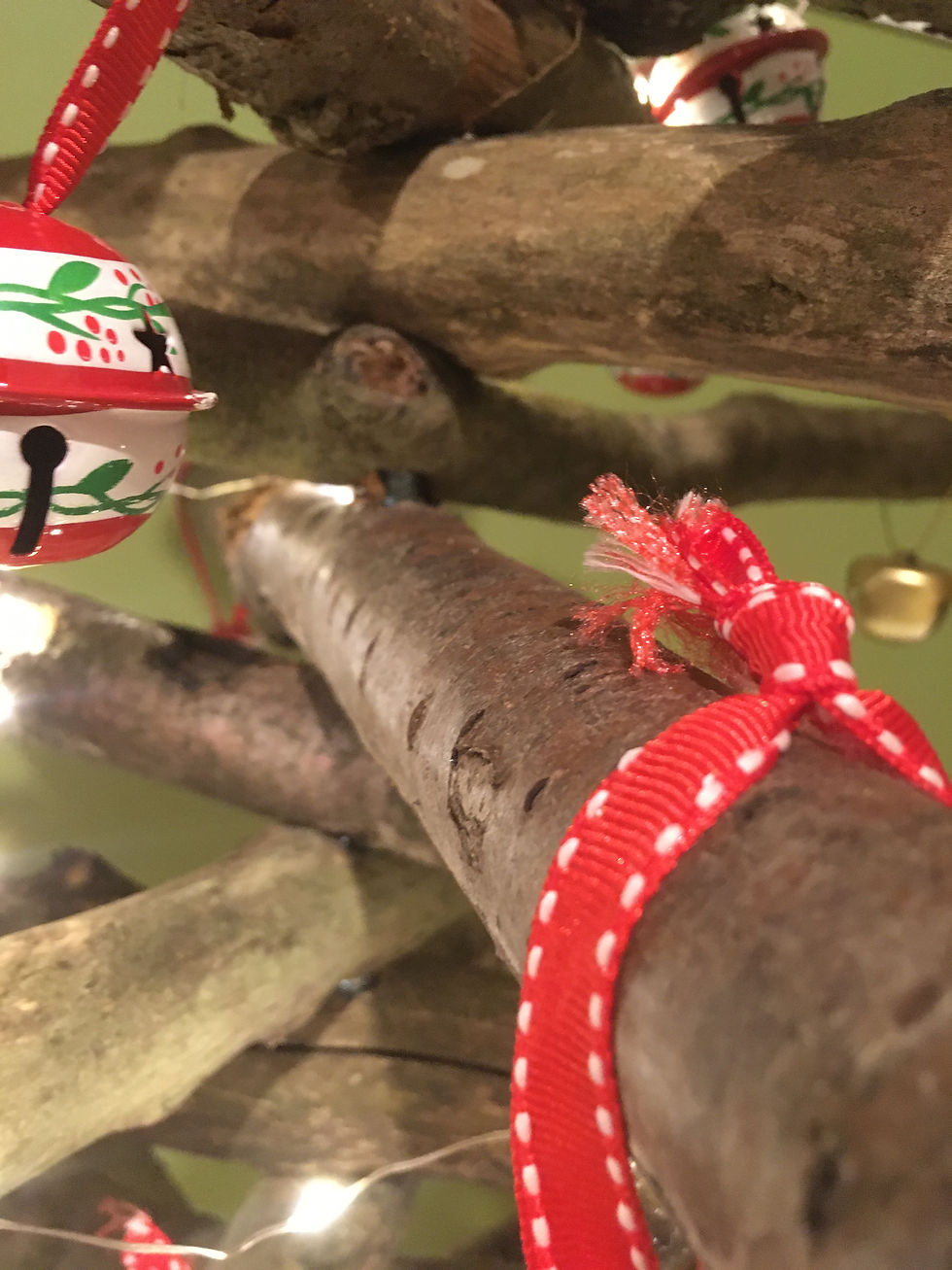
In summary I feel the pros outnumber the cons. The biggest disadvantage is that it doesn't really look like a traditional Christmas tree, and I do realise that this eco-friendly tree will just look like a pile of brown sticks to some. However, I am of the belief that forming new habits are crucial if we want to live a more environmentally-friendly lifestyle, and that may include tweaking old traditions if needs be.
I think the key to making an attractive stick Christmas tree is choosing nice wood and splashing out on lights and decorations. I also think making sure you keep an overall triangular shape helps it look more like a fir tree.
So have I have inspired you to make your own eco-friendly Christmas tree?
I hope so!
Thank you for reading.
Have a great week.
留言